The Prime Minister has brought back to the centre-stage of national debate a long-forgotten figure. Hero to many, villain to some, but a brilliantly original personality who did more to challenge, and diminish, the Congress party’s monopoly on power than any other person before or after him. And he did so when Indira Gandhi was at the peak of her power.
We are talking about the late Jayaprakash Narayan, who led the mass upsurge against Indira Gandhi in what was seen as the first widespread anti-corruption movement, Sampoorna Kranti, in India’s history. And when it led up to the imposition of the Emergency, he was among those Mrs Gandhi detained.
Except, given the state of his health — he suffered from severe diabetes and in 1975, treatments were not a fraction as good as they are now — she decided to detain him not in a jail, but in a hospital. The hospital she chose was the Post Graduate Institute of Medical Education and Research (PGIMER), or PGI as it is more popularly known, in Chandigarh. I was a mere journalism student during the Emergency and not particularly politically aware, so I can’t comment on any aspect of JP’s life or policies with any special authority. But I can tell a story about the deterioration of his health, leading to his death. It’s an issue the Prime Minister has brought up in the Bihar campaign.
Also read: Congress can find mahagathbandhan fix in legacy of staunch critic Jayaprakash Narayan
As soon as the Emergency was lifted and the new Janata government, fathered by JP, sworn in, a clamour began for an inquiry into what had led to the deterioration in his health, particularly his kidneys, while under detention. His kidneys had by now failed entirely and government imported a dialysis machine for him (remember, it was still 1977, and dialysis was new to the world, unknown in India). The word dialysis was in our headlines often.
There were many conspiracy theories, and it didn’t help that Mrs Gandhi had chosen to send him to Chandigarh, capital of Punjab and Haryana, which was then ruled by her political commissar and muscle-man, Bansi Lal. Remember the infamous slogan, “Emergency ke teen dalal, Indira, Sanjay, Bansi Lal”.
It also did not help that the director of the PGI then, Dr P.N. Chuttani, an eminent physician, was considered particularly friendly with Bansi Lal, besides being his own doctor.
So the broad conspiracy theory was as follows: Mrs Gandhi sent JP to Bansi Lal, who handed him over to Chuttani to have him “put away” medically.
Sure enough, in that environment, there were many believers. A one-man inquiry commission was set up, headed by a well-known Bangalore doctor called Dr K. Nagappa Alva. It started holding hearings in camera. There was immediate consternation in the PGI faculty. Some felt victimised, others vindicated, and as you’d expect, two groups formed overnight.
That is where I sort of sleep-walked into the situation, not quite understanding the scale and significance of what was going on. I was a cub reporter with the ‘Indian Express’ in Chandigarh then, still on probation, not 21 yet. And, as you can see in the accompanying pictures, the only warm jacket I owned in that winter was my college blazer. In a tiny city of a half million people that averaged less than three murders a year, my first assignment was to cover crime, university campus, local sports and, of course, the PGI.
For me, therefore, this was just a big story that fell in my lap and I chased it, innocent of the political nuances and complications. As usual, as groups fought, information leaked and, as usually happens, trade unions always become the reporter’s best allies. Soon enough, therefore, I began to get inside stories of the in-camera hearing and find the front page.
It greatly upset one of my editors — not the editor-in-chief but one of the illustrious group — who had a view on the story, as I presume he thought the conspiracy theory was fictional and the inquiry unnecessary. He showed irritation often enough, but in the true ‘Indian Express’ tradition, nobody told me to stop, and the “leaks” continued making page one, usually the top half.
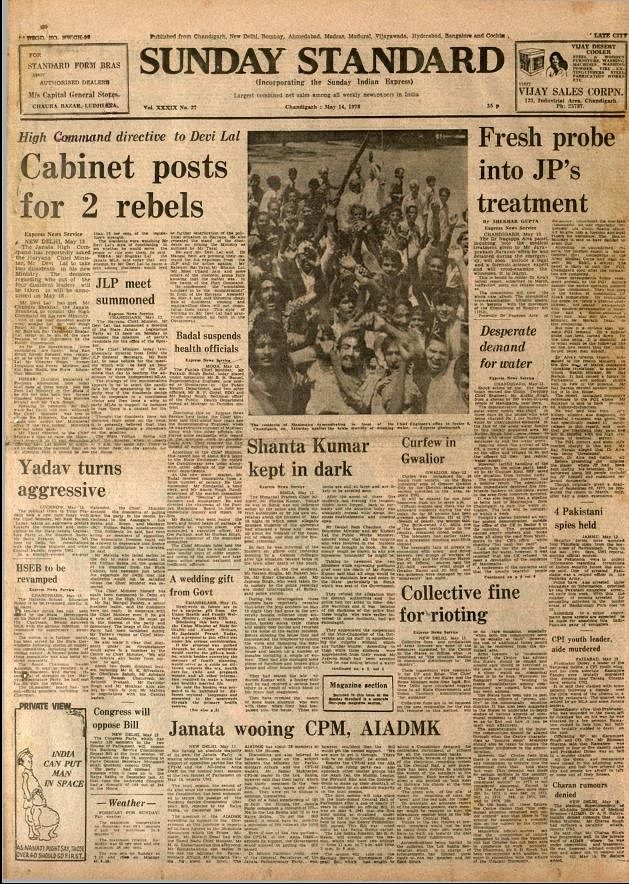
The Janata government’s health minister was the most famous maverick of Indian politics then, socialist Raj Narain, who spoke language more colourful than Lalu Yadav’s and had just defeated Indira Gandhi in the Lok Sabha elections in Rae Bareli. He too came to the PGI, and I muscled my way into his car, and then, to the consternation of officials and institute brass, he chatted with me for a long time on the inquiry. With some luck, I found some of these pictures in family albums. Note his beard, belly and muffler in place of his trademark bandana, and my college blazer.
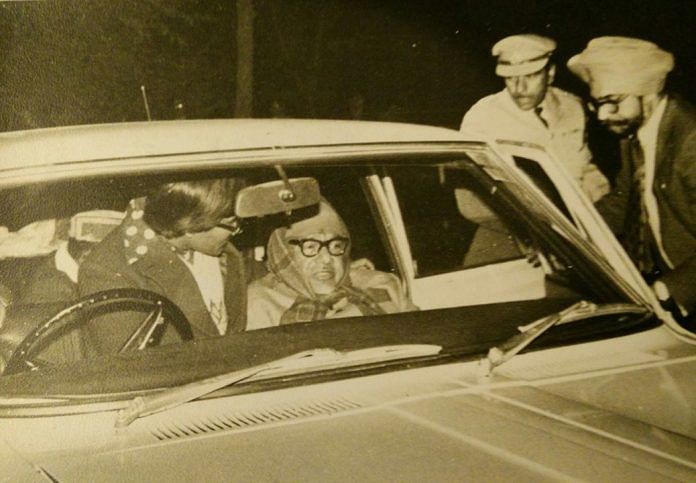
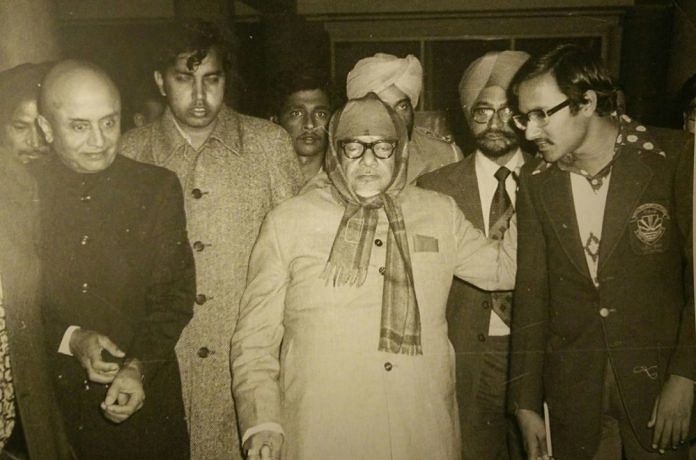
And if you take a closer look, it is more about how, after a scathing inquiry report had been submitted, the affected group of doctors succeeded in scuttling it. By this time, it would seem that I had run out of luck. This was provocation enough for that particular editor to ask for me to be fired — and better do it while the idiot is still on probation, he said. He said I didn’t understand any nuances and was too young and inexperienced to be put on the story.
Also read: Cho Ramaswamy: The Tamil legend who called out politicians on Babri and Emergency
But he had neither made provision for the ‘Express’ way of life, nor understood that Prabhash Joshi, then resident editor in Chandigarh, had a spine and a conscience. Also, having come from life in the Sarvodaya movement as a close aide of JP, Joshi understood the nuances very well, even if I didn’t.
He sought the intervention of Ramnath Goenka and S. Mulgaonkar, the then editor-in-chief. Both intervened to say that not only was I to be not fired, but also that I must continue following the story. It is a different matter that the inquiry proved nothing and JP’s kidneys and his death still remain an eternal mystery. The Prime Minister has brought it back to life, and helped me recall this story. (My personal view also is that there was no conspiracy to damage JP’s kidneys and that, in fact, doctors, led by renowned nephrologist Dr K.S. Chugh, had tried their best to save them, but again medical care was then not as advanced as now.)
As for JP’s legacy, the cruel truth is, his followers let him down. He was a broken man when his Janata government collapsed and Indira Gandhi returned within three years, people agreeing with her they had elected a “khichdi”. JP was, in fact, forgotten as soon as his followers got power. To such an extent that while he was ailing in Mumbai’s Jaslok Hospital, the government once even announced his death in Parliament, on 23 March 1979. JP lived on for more than six months.
The Janata broke up on the issue of what was called “dual membership”: how could leaders who had come from the earlier Jana Sangh continue to be members of the RSS? It was the same old secular-communal, Left-Right divide. JP was rooted in the former. But his socialist supporters dumped him, became powerful in their own right, many ending up as chief ministers or in the central cabinet. It is therefore such an irony now that his memory and legacy are being resurrected by the BJP/RSS instead as an election plank in Bihar. How significant or respected a figure he is in Bihar’s political memory, however, is tough to say. As with much else that was great in our political history, his name has also been trivialised. I caught this motorbike, with no number-plate and its anarchist owner claiming to be a “JP Sainani” (JP’s warrior) not far from his native village, Sitabdiara, at Rajnath Singh’s rally during the 2014 Lok Sabha election.
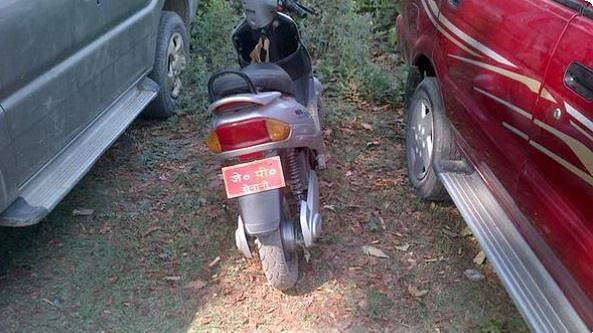
(This article was first published on Facebook on 13 October 2015)


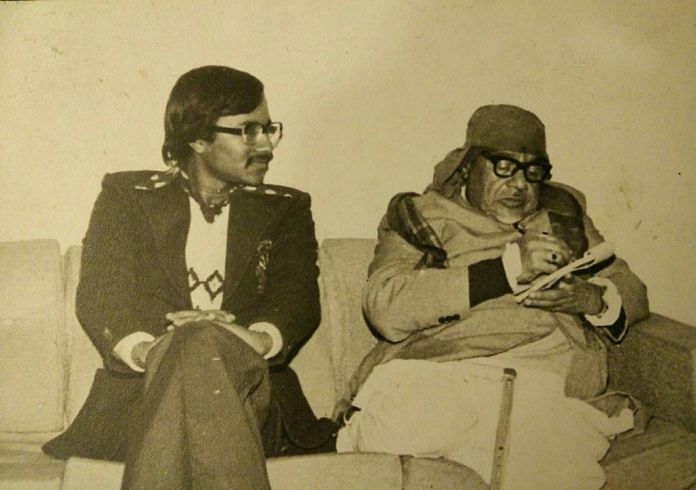

Given that JP suffered from high diabetes, it would have been easy to let his kidneys deteriorate just by “ignoring” to keep the diabetes in check. No “proactive” conspiracy would be needed.
I would not suggest that the above “deliberate neglect” might have happened, but I would only make a general statement which would be news to no one that, “Indira Gandhi was a strong person”. From there it would be a small corollary to say that, “a strong person can take unusual decisions.”
But it is not surprising that Mr Modi would want to usurp ALL the great leaders this country has had, be it a Gandhi or a Patel or a JP. It reflects the well known paucity of great NATIONAL leaders in the Sangh fraternity. But our prime minister would do well to recall that JP had nothing against Indira Gandhi as a PERSON, it was her undemocratic POLICIES that he vehemently opposed. On this account, JP would have similarly opposed Mr Modi too, for example on his handling of the Rafale deal. JP would positively be turning in his proverbial grave to know that the latter was using his name to further inflict the same undemocratic ways of working on the people of his beloved country.
The failed experiment of the short lived Janata sarkar formed in 1977, which met a dishonourable end in 1979, is a splendid text book lesson on how coalition governments are formed, and will inevitably fail. Only Vajpayee ‘managed’ a coalition really well, although he too had to pay a price for Jayalalithas’s demands and caprice. (PVN did his best Chanakya act but still had to carry a permanent JMM ‘Cash for votes’ scar). The UPA would have collapsed with the Left taking an abrupt left turn away from it in 2009, but was saved only at the last minute only by Mulayam’s own trademark ‘twist of the tale’. The point is that people like Raj Narain ( to mention only one) have to be made ministers and others like Devi Lal and Deve Gowda offered the post of PM. (Just take a look at Karnataka now). Contradictions and confusion created by greed for power and envy will haunt every coalition, and hence the present, so called Maha Gath Bandhan, failing to even taxi to the runway is hardly surprising. If only JP had been in good health in 1975, India may have seen a very different brand of politics for the better. But then, even the Mahatma could not ensure a smooth government in 1947! And, what a great price we have been paying ever since as a result thereof !